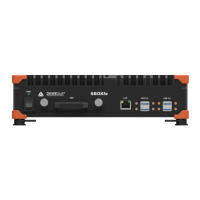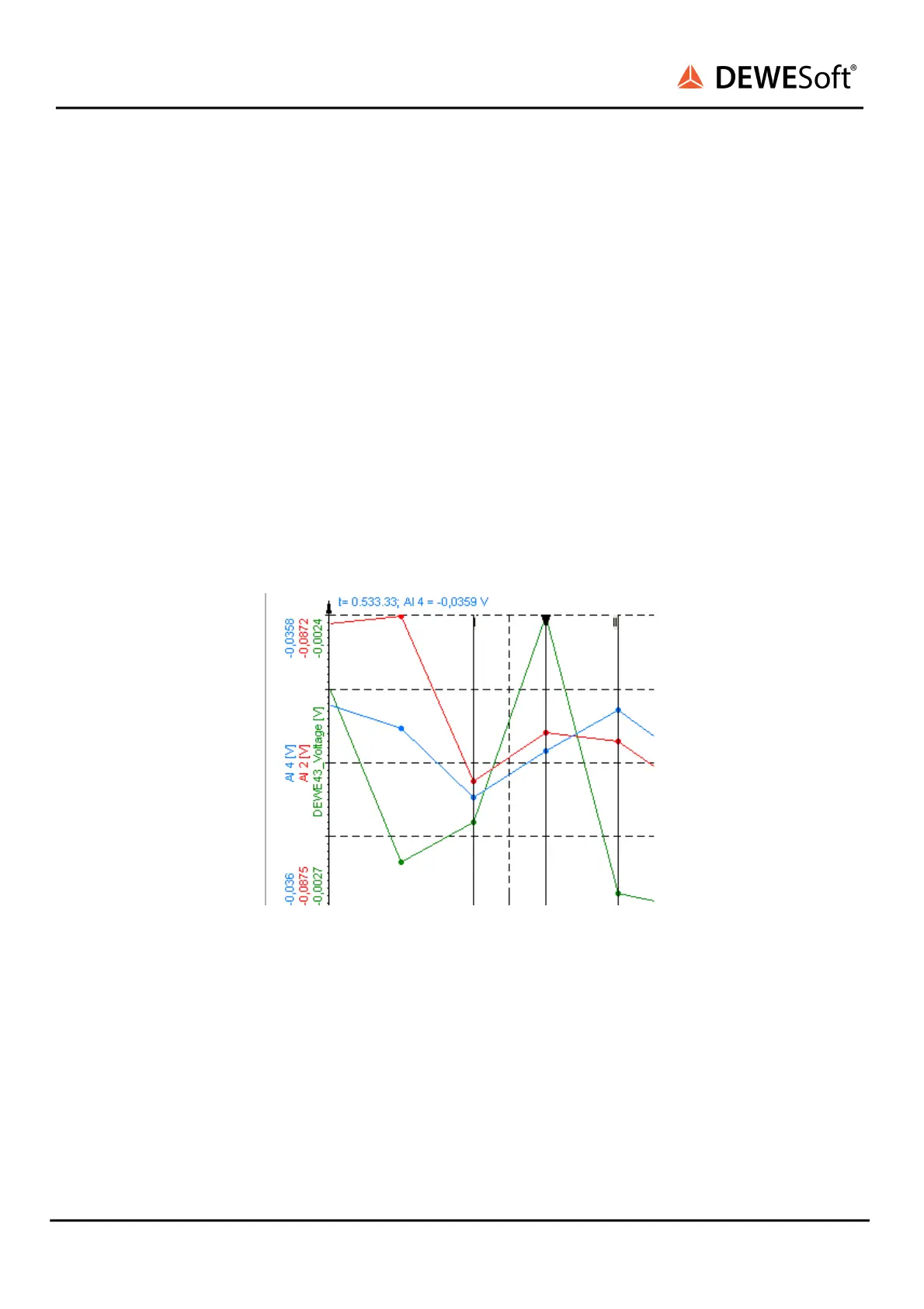SIRIUS
®
TECHNICAL REFERENCE MANUAL
The channels of the DS-NET system are of course asynchronous in this case, thus the data point is not
aligned to the synchronous channels.
8.2.1.4. Sampling jitter
The sampling frequency is normally assumed to be constant.
Samples should be converted at regular intervals. In real-world applications this can not be achieved.
The error introduced is called sampling jitter, which describes the time variation of the real clock in
relation to the ideal clock.
8.2.1.5. Sync / Async channels
In DEWESoft® there are 2 fundamentally different types of channels: synchronous (e.g. analog data) and
asynchronous (e.g. CAN data) channels.
Synchronous channels always have exactly one data point related to the masterclock and the time
between 2 adjacent data points is always constant.
In the example below you can see 3 synchronous channels and that the data points of all the channels
are perfectly aligned to each other.
Synchronous channels
Asynchronous channels may have data points at any instant of time and the time between 2 adjacent
data points may vary.
In the example below you see the green signal which is a synchronous channel of a SIRIUS® (which is
clock master) and 3 channels from 3 different DS-NET systems which are of course asynchronous. When
you take a look at the black line denoted with ❶ in image below “Asynchronous channels” you can see
that the asynchronous data points are not aligned to the green synchronous data points and also not
aligned to each other.
SIRIUS
®
V20-1 314 / 336

